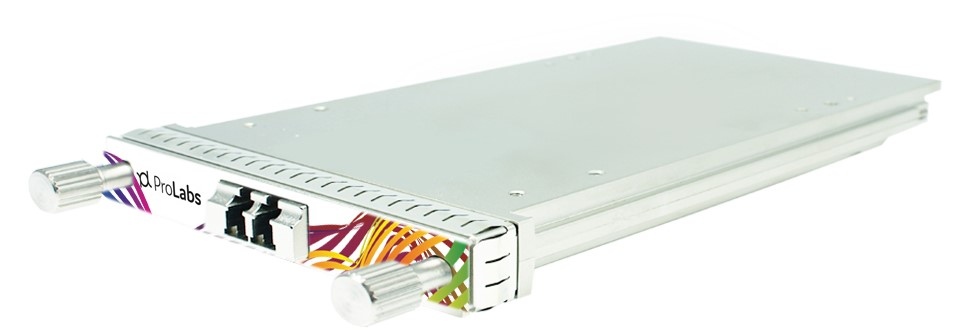What are impairments and why do they matter?
When link distances and data rates increase, the physical limitations of light transmission over optical fiber cable becomes an inhibiting factor. These limitations are called impairments and become significant at longer distance and higher data rates.
How have impairments have been compensated to date?
The digital signal processor (DSP) chip within the coherent optic is the key to solving these complex problems. Because impairments are the result of the physics (the interaction of glass and light) they can be modeled with mathematical formulas. The DSP can mathematically compensate and adjust the transmission and reception of light in a few ways that mitigate impairments and thereby increase link reach and data rate.
Over the decades many technologies have been developed to compensate for impairments, these include:
- Dispersion compensation filters
- Dispersion shifted fiber
- Amplifiers
- Attenuation devices
- Other tools that require significant time and expense to integrate into networks
Coherent optics can eliminate much of this equipment and can help to reduce these issues by solving these impairments with software algorithms in the DSP.

Dispersion
There are several dispersion issues on optical networks including:
- Chromatic dispersion (CD)
- Phase mode dispersion (PMD)
- Polarization-Dependent Loss (PDL)
Dispersion arises because the shape of the light wave spreads as it travels along the fiber. In addition, wavelengths of different frequencies travel at slightly different speeds. Both effects make it difficult for the receiving optic to differentiate where signals stop and start. Since these characteristics are consistent, mathematical formulas in the DSP can be used to compensate for them. This is more efficient than compensation with the physical devices used in prior generations of optical equipment.
Attenuation
This is probably one of the easiest impairments to understand because it is consistent with our everyday experience of light. Attenuation is the progressive dimming of light as it travels through the fiber. This is like a flashlight that brightly illuminates the area immediately in front of it but farther away the illumination is much weaker. At a certain distance in the fiber light is too weak for the receiver to detect it. The opposite effect can also occur. If the light is too bright, then the receiver cannot distinguish between on and off signals. This can happen when the laser light source is too close to the receiver.
Optical Signal to Noise Ratio
There is always noise present in a link. It can arise from or be affected by the characteristics of the optical module electronics, the fiber itself and even environmental conditions. The optical signal must always be significantly stronger than the noise or again the receiver cannot detect the information being transmitted. This is like static on a radio broadcast. At a certain point the broadcast becomes ineffective due to amount of noise (static) that is mixed with the music.
FEC and Programmability
The presence of a DSP dedicated to optical transmission enables other benefits for coherent transmission. Forward Error Correction (FEC) is a method of detecting bit error rates (BER) in an optical signal without a reverse path signal for comparison. FEC can enable some correction to transmission errors and therefore it: 1) helps guarantee signal integrity and 2) can enable greater signal distances. FEC works by injecting redundant bits into the data stream at transmission and analyzing the redundant bits at the receiving end. Algorithms are used to compare the bits and determine if the data can be corrected or must be re-transmitted.
Conclusion
The presence of a DSP in a coherent transceiver helps overcome impairments. Software, that can be controlled remotely or set to default parameters, is able to adjust the amplitude, phase and polarization characteristics to meet the application need or match the limitations of the optical fiber.
CD, PMD and PDL can all be detected and corrected within the DSP. Attenuation and the Optical to Signal Noise Ratio (OSNR) are also enabled for compensation via the DSP. This enables better signal integrity at higher bit rates over longer distances. Doing this processing in the DSP eliminates significant work in link planning and link budgeting for optical networks. At ProLabs we understand how to use coherent technology to reduce capex and opex costs for access, edge, metro and long-haul optical links. Today, up to 400G can be transmitted on fiber that could not support 10G using the older direct detect technology.
This means that coherent optical transceivers can be used for a wide variety of network applications. At the 2019 Optical Fiber Communications (OFC) Conference Andrew Schmitt Directing Analyst with Cignal AI predicted that by 2022 or 2023, the "modularization" of coherent technology will begin to cannibalize the optical hardware market.
At ProLabs we understand the changes taking place in this market and how coherent technology can be applied to network problems. Cost efficiencies gained with coherent optics enables lower cost, high performance optical links. As the functionality increases and the cost decreases coherent optics are displacing other transceiver solutions and other optical equipment and gaining popularity for more link applications. Our experts are on the forefront of these developments.
Simply follow the links below to see our full series of coherent articles:
